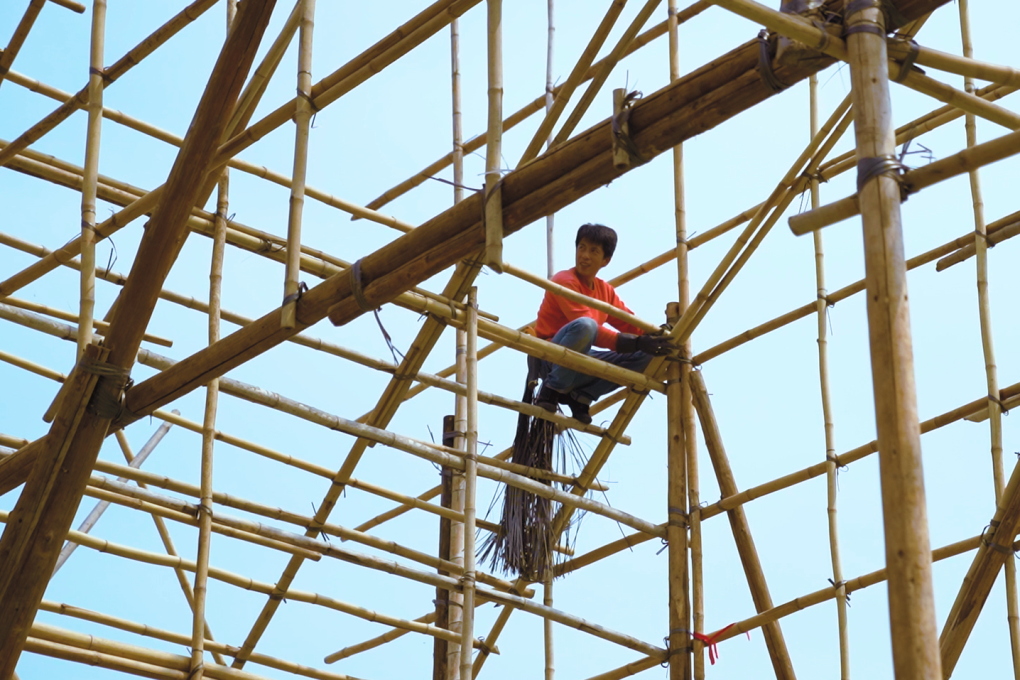Hong Kong’s bamboo scaffolding: dangerous and difficult to work with, so why is it still used in construction?
- The city is one of the last places in the world where bamboo is still widely used as a building material
- It remains a viable yet threatened industry, with few companies specialising in the craft. Those that do have trouble finding new blood

Hong Kong is a jungle of concrete and steel. But look closely, and you’ll see an organic material that weaves itself through the cracks, up the walls, completely engulfing entire structures.
That material is bamboo, and Hong Kong is one of the last places in the world where it is still widely used as a building material, primarily for scaffolding and seasonal Cantonese opera theatres.
Bamboo has a long history in Chinese culture. It’s been used to make paper, musical instruments, furniture and even entire buildings. China is home to 500 species of bamboo, which is 40 per cent of all known species in the world.
But in most of mainland China, bamboo has largely fallen out of use as a construction material because of safety concerns. Builders favour aluminium and steel, which they consider to be higher quality.
In Hong Kong, bamboo construction remains a viable yet threatened industry. There are few companies that specialise in the craft, and those that do have trouble finding new blood.
Unlike steel, which can be cut into precise pieces, bamboo is a plant and therefore much more fickle. Not all pieces are consistent in quality, and they have to manually be tied together, which requires a lot of skill.
“If bamboo scaffolding gets too high without any support, it can bend,” says Youngman Wan, a general manager at SMP Limited, a bamboo construction company in Hong Kong. “When it comes to a project like that, you have to be absolutely precise.”
